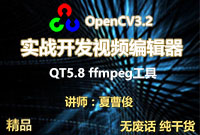

The audioĪnother thing you will have to change is the audio, because your system could have (probably)a different name for its audio device. The frame rateĮxperiment also with the frame rate to see what is the right one.

You need to put the size of the screen that you are using.

To record the screen recording also your voice, like I do in the video below, you can use this script made with Python that uses ffmpeg to do the job. What do I need to record the screen and my voice on the mic This is a good feature that allows to avoid overwriting a previous recording and allows also to record in more step so that you can join the files together at the end ( go here to get the code to do it). Avoiding overwriting, we saidĪs I said before this code start looking to a file called output0.mp4 if there is not a file like that in the folder it saves the video with that name, otherwise it will save it with the first free numer that he will find, because it will recall the record function until it finds a name with a number that is not already used by another file in the folder. Take a look at this post here to see how you can do it with ffmpeg. You can even trim some parts of the video that you don’t like. You can take advantage of this script to record your videos in more step and then join the videos together with join mp4 together. Today we want to make a simple script that allows you to record the screen with your voice from the mic avoding to overwrite what you eventually recorded in a previous time. If you want to record the screen you could simply use the ffmpeg command, but if you want to make something a little more sofisticated you can combine the use of ffmpeg with python to get incredible results. How to avoid recording over the previous recordings Go here to see how: click on this link to see how to install ffmpeg All builds require at least Windows 7 or Mac OS X 10.10.įirst of all you need to install ffmpeg: its a great free tool with a tons of features. Install ffmpegįFmpeg is the leading multimedia framework to decode, encode, transcode, mux, demux, stream, filter and play. The video output is very light as it does not occupy much memory. If you don’t do much of reworking on the videos, like me, this could be the right instruments for you if you want somethin raw but immediate. This is the fastest way to record your screen. Almost all the videos that I upload to youtube uses this method that I am going to explain here.


 0 kommentar(er)
0 kommentar(er)
